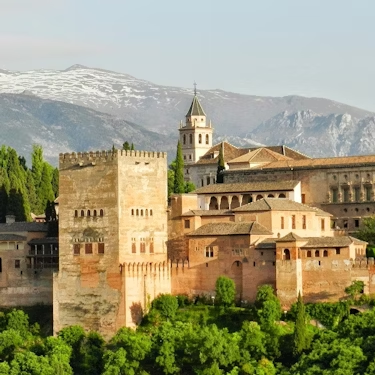More about: Top Attractions at the Granada Alhambra Palace
The Alhambra is a treasure of Islamic architecture that Sultan Alhamar, founder of the Nasrid dynasty, ordered to be built on Sabika Hill in the mid-13th century as a military building. It later became the royal residence and court of Granada until 1492, when the Catholic Monarchs completed the Reconquest of Spain and the Alhambra passed into Christian hands.
Whether you have Alhambra tickets to tour the Alhambra on your own or join one of the guided tours of the Alhambra, take note of what you can't miss:
The Alcazaba
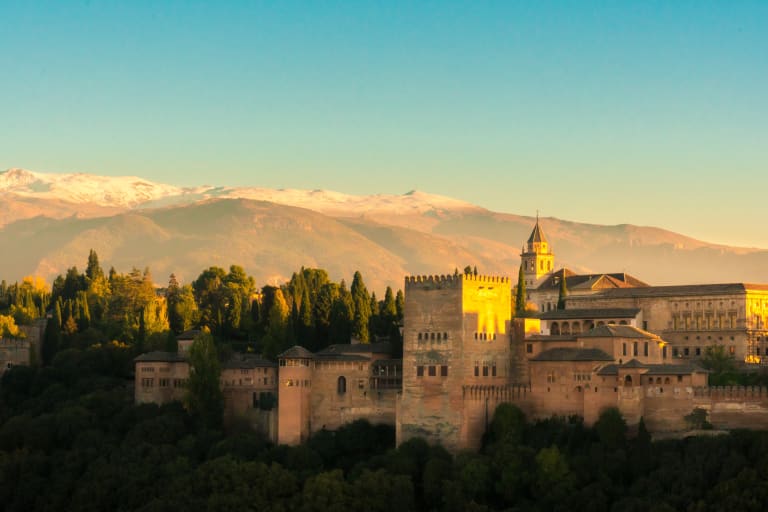
The Alcazaba is one of the top spots if you book tickets for the Alhambra and the Nasrid Palaces. It is a military building where the army resided to defend the perimeter. It is believed that the Alcazaba was first built on the remains of an ancient castle.
It comprises the western end of the palatine city and is the most outstanding part of the city when viewed from any vantage point in Granada.
Plaza de Armas

The Plaza de Armas, which was the original entrance to the Alcazaba, is situated at the end of a cobbled slope. It consisted of a group of buildings where different services were provided to the inhabitants of the fortress.
Tower of the Armas
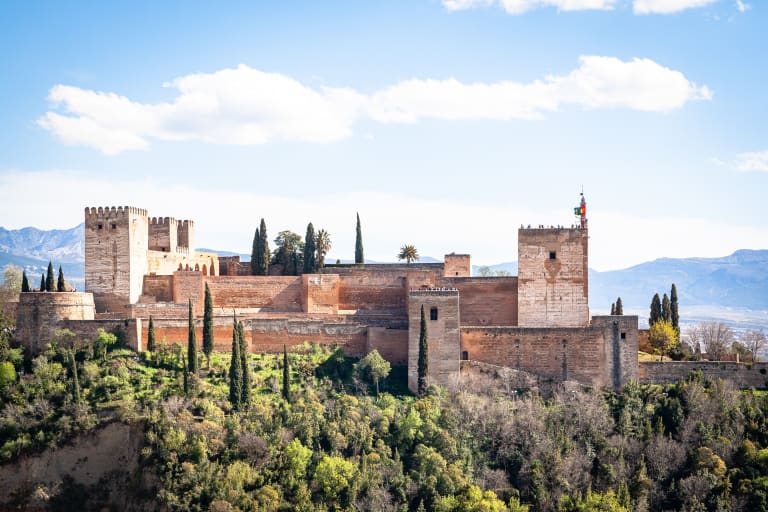
If you book a guided tour of the Alhambra you will also see the Torre de las Armas which, located on the north wall, gave access to the Alcazaba complex from the area of the River Darro. In this way, the Nasrid palace was connected to the Albaicín neighbourhood by means of an elevated bridge known as Puente de Los Tableros.
La Vela Tower

It is named after "La Vela", the bell that the Christians rang in this place to celebrate the end of the Reconquest in 1492. For this reason, it is also known as the Bell Tower, which tolls every 2nd of January to commemorate the victory of the Catholic Monarchs.
Garden of the Ramparts

This is one of the corners of the Alhambra in Granada that you will like the most when you see it, as from its balcony you will be able to contemplate wonderful views of the Sierra Nevada, the Torres Bermejas, the Vega and the city, so you can't miss it! You will find it at the entrance of the Alcazaba.
The Palace of Charles V

It is located next to the Nasrid Palaces and is one of the finest Renaissance works to be found outside Italy. Emperor Charles V ordered it to be built in the 16th century in order to enjoy Granada and its Alhambra, for which he had a real fascination.
Admission to the palace is free and it is well worth a visit because it is unique in its style. It is notable for its circular courtyard in the centre of this square building, which demonstrates a high level of knowledge of Roman imperial architecture. If you take a guided tour of the Alhambra, the guide will make a compulsory stop here.
The Palace of Charles V also houses the Museum of the Alhambra, dedicated to Hispano-Muslim and Nasrid art, and the Museum of Fine Arts, most of whose works come from convents and monasteries such as La Merced, La Cartuja and San Francisco, among many others.
The Nasrid Palaces
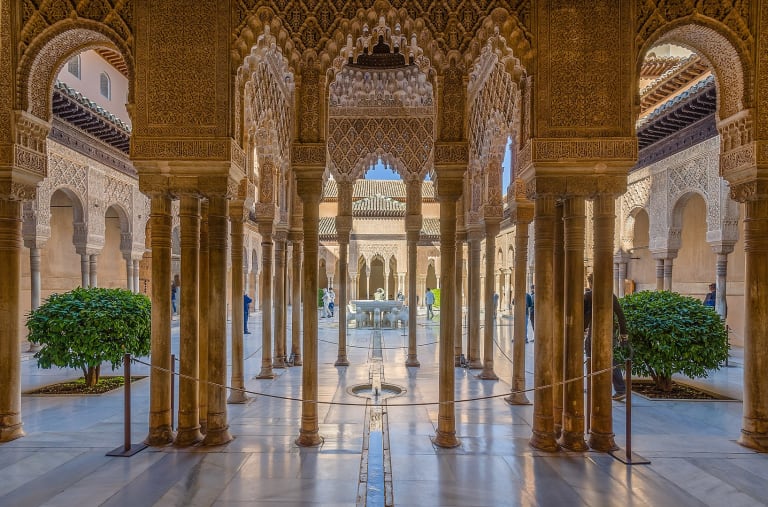
The Nasrid Palaces were the residence of the kings of Granada. They are made up of three independent buildings known as the Mexuar (audience area), the palace of Comares (the king's official house) and the palace of the Lions (the harem and the royal family's dwelling).
This is the most visited part and one of the parts I liked the most, together with the Generalife. Here you will find such beautiful spaces as the Ambassadors' Hall, the symbolic centre of Nasrid power; the Hall of the Abencerrajes, the king's bedchamber; the Hall of the Kings, the sultan's council room, or the Courtyard of the Lions, an allegory of paradise.
Note the delicate epigraphic inscriptions in classical Arabic carved in plaster or wood that are scattered on the walls and ceilings of the Alhambra.
- The Mexuar: this is the first area we come across on entering the Nasrid Palaces and the oldest of the three buildings. This was the place where the sultan dispensed justice, held audiences or where the council of ministers met.
- The Palace of Comares: this was the official residence of the sultan and the site of the Nasrid throne room. Its decoration stands out for its richness, as both wanted to astonish visitors with the power of their dynasty, and they succeeded, don't you think?
- The Palace of the Lions: this building was the abode of the royal family and the sultan's harem. If you are looking for the famous Lion Courtyard that you have seen countless times in photographs, take out your camera because it is here.
Golden Room

The secretaries of the Islamic court used this room to note down and execute the sultan's rulings. It is known as the Golden Room because of the beautiful wooden ceiling that covers this room, whose original decoration belonged to the time of Mohammed V.
Hall of the Abencerrajes

On the south side of the Patio de los Leones you will see the Sala de los Abencerrajes (Hall of the Abencerrajes), which is thought to have been the sultan's bedchamber. You'll be struck by the spectacular dome that decorates the ceiling, but keep an eye on the fountain in the centre because it has a rather disturbing story- ask your guide to tell you about it because you'll be amazed!
Hall of the Kings
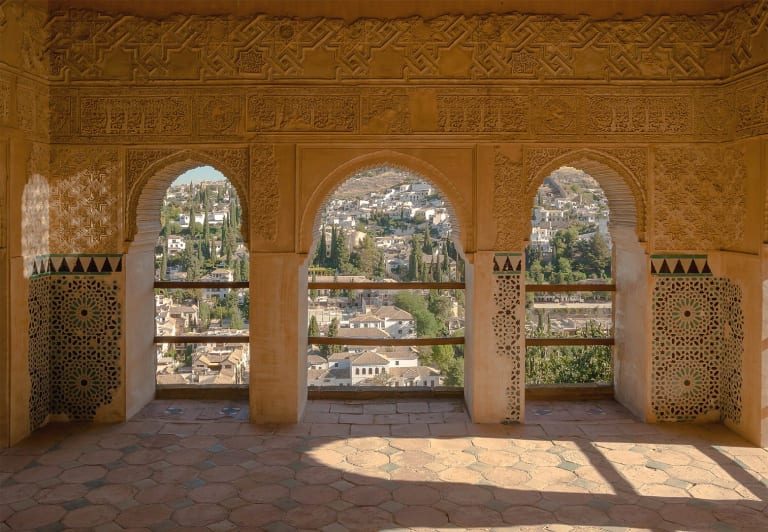
To the east of the Patio de los Leones is the Hall of the Kings, the longest room in the Harem, so called because of the painting on the vault of the central alcove, which is thought to represent the first ten kings of the Nasrid dynasty.
Given the size of this room in the Alhambra in Granada, it seems that it was used for receptions and parties or as a summer room to rest and escape the heat.
Hall of the Two Sisters
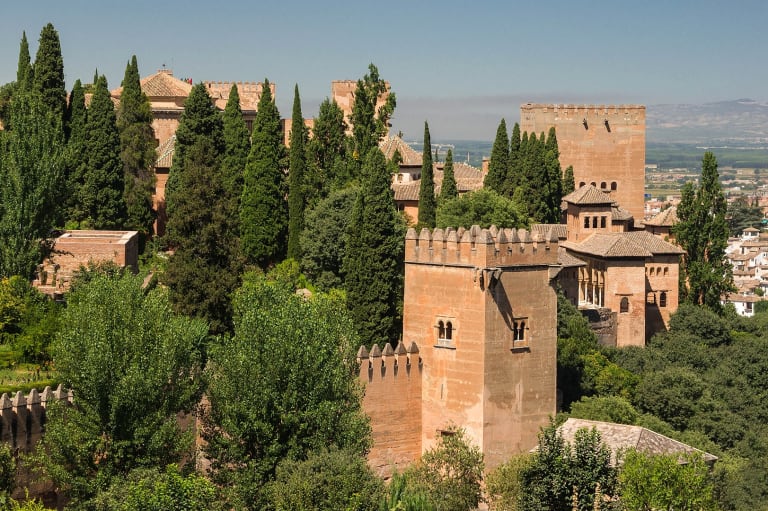
This room was originally created to serve as the sultan's new mexuar, although it is better known as the residence of Sultana Aisha, the mother of Boabdil (the last king of Granada), when she was repudiated by her husband Muley Hacén.
Corridor and Hall of Charles V

Emperor Charles V was always in love with the Alhambra in Granada, which is why he ordered to build his quarters and an office from which to direct his empire. Did you know that the writer Washington Irving also stayed here during his visit to Granada in the 19th century? This palace must have inspired so many stories...
The Partal
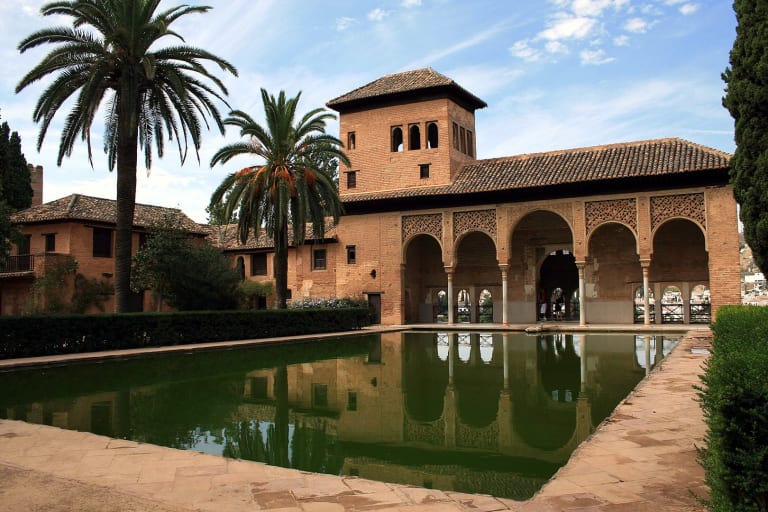
El Partal is an area that houses the remains of the former residence of King Muhammad III. In this area you can still see the palace El Partal with a portico with five arches, a beautiful central pool and the famous Torre de las Damas, which dates back to the 14th century and is one of the oldest buildings in the Alhambra. In my opinion, it is one of the most beautiful parts of the visit.
Calle Real Alta - The Medina

The Medina, located in the upper part, is a residential, administrative and religious area with shops, public baths and mosques where the civil servants, nobles and craftsmen who provided for the needs of the palatine city lived.
Its main streets were Calle Real Baja, Calle Real Alta and Calle de Ronda. Nowadays, the old convent of San Francisco is preserved here, which has been converted into a Parador Nacional de turismo.
Generalife Gardens

If you book a guided tour of the Alhambra you will also admire the Generalife, the summer villa of the Nasrid kings located on the Cerro del Sol and one of the few surviving almunias from medieval times in the whole of Al-Andalus.
Its gardens were designed for the rest and recreation of the sultans. They were filled with ornamental orchards, vegetable gardens and well-tended courtyards.
Generalife Palace

When the sultans of Granada wanted to escape for a while from the formalities of the court they would go to the Generalife Palace, a place designed for relaxation and rest. It is another of the most beautiful areas of the Alhambra where you will want to take photos and videos.
Partal Gardens

The gardens of the Partal are a fantastic place to stroll through during your visit to the Alhambra in Granada. They extend from the exit of the Rauda to the Torre de las Damas. In the past, the gardens surrounding the royal palaces and the residences of the Nasrid nobility were located in the same place.
Royal Cemetery or La Rauda
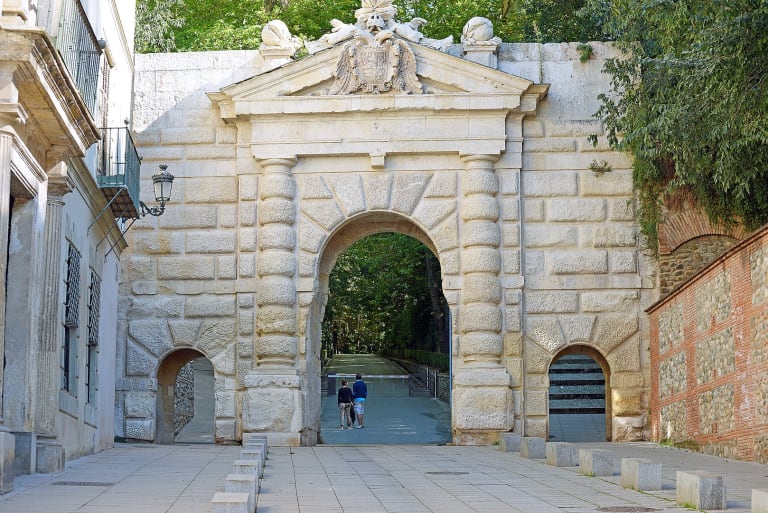
Located between the Nasrid Palaces and the Palace of Charles V, La Rauda is the only cemetery in the monumental complex that remains today. It was destined for the Nasrid royal family but today remains empty as Boabdil, the last king of Granada, moved all the tombs to a village in the mountains.
How to get tickets for the Alhambra
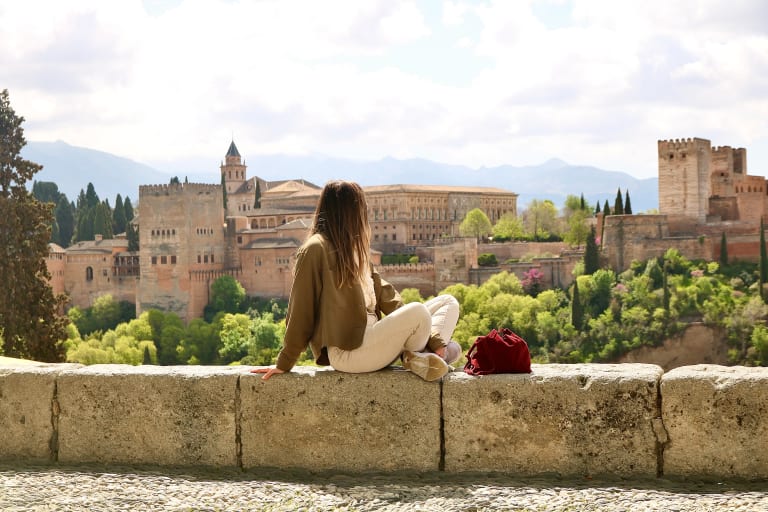
The legendary Alhambra is one of the most beautiful monuments in Spain and every year it breaks visitor records. You can imagine that to see such a place it is advisable to get tickets for the Alhambra in Granada online and at least a month or two in advance of your trip if you do not want to run the risk of running out of them and having to queue endlessly at the ticket office to try to get them at the last minute.
In Hellotickets you can book tickets for the Alhambra and Nasrid Palaces, as well as, of course, compare prices, schedules and availability of tickets and guided tours.
How much do tickets cost?
I recommend you to have a look at the tickets to the Alhambra in Granada in Hellotickets because there are several options and prices are quite tight, between 30 and 40 euros approximately.
Organize your visit to the Alhambra
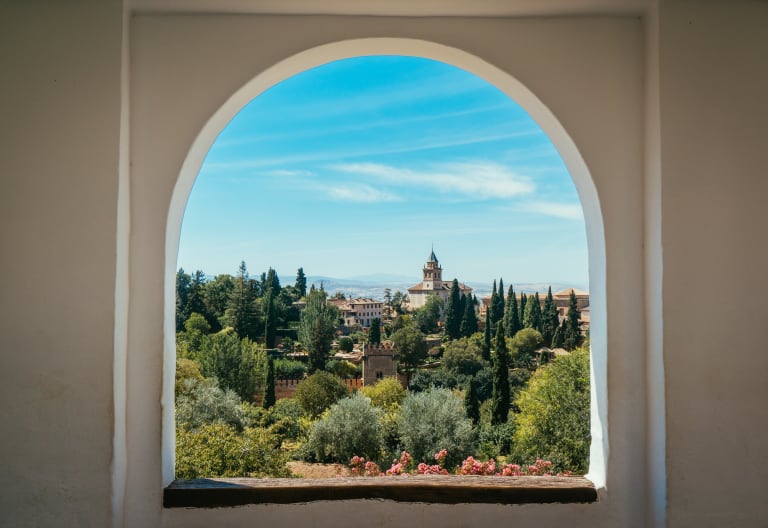
You will get more out of a monument with so much history and so much art if you visit it with a guide on a guided tour because he will explain anecdotes, secrets and details that you probably don't know and that if you see it on your own would probably go unnoticed.
How to get to the Alhambra
There are several options for getting to the Alhambra in Granada.
- Bus: there are several urban bus lines such as the C30, the C32 and the C35.
- Car: enter from the Ronda Sur (A-395). Take the Granada ring road (N-323/ A-44) towards the south (Motril). When you have skirted the city you will see the direction Alhambra (Ronda Sur) to the car park of the monument where you can park your car.
- Walking: leaving the Plaza Nueva take the slope of Gomérez. When you reach the Puerta de las Granadas, turn left and continue to the Puerta de la Justicia, which serves as the entrance to the Alhambra.
How long does it take to walk around the Alhambra?
About 3 hours and 30 minutes queuing at the entrance.
Isabel's Traveller Tip
During the visit you will walk a distance of about 3.5 km in total. Remember to wear comfortable shoes!
Other interesting places around: the viewpoint of San Nicolás
You may not know it, but the sunset at the Alhambra in Granada is considered to be the most beautiful in Spain. The best view is from the Mirador de San Nicolás in the Albaicín neighbourhood. From here you will have the best panoramic view of the monument with the Sierra Nevada as a backdrop - it's magical!




